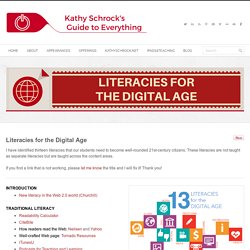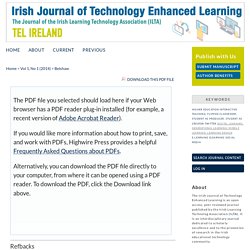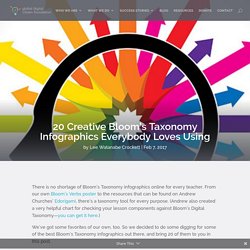

*Definition of Literacy in a Digital Age - NCTE. *Examine What Makes a Literacy in the May/June Issue. A few years ago, at an ALA Annual Conference, I found myself experiencing a very peculiar day.

Besides my standard sessions on information literacy, I attended sessions on civic literacy and news literacy, as well. There were conversations in hallways about digital literacy, but also about disciplinary literacy and financial literacy. *"Techquity": Going from Digital Poverty to Digital Empowerment - ASCD. During my classroom teaching career, one of my middle school students once pointed out that a common back-to-school assignment was classist, racist, and full of microaggressions.

The assignment many teachers in our district used throughout all grade levels was around the question, “What did you do over the summer?” In previous years, students from high-income backgrounds who created projects about their European or tropical island vacations were elevated as having the most valuable experiences.
My student, who spent the summer working in a family restaurant and couldn’t afford an extravagant vacation, felt invalidated and marginalized when teachers put value on the summer experiences that required economic access. *7 Things That Happen When Students Own Their Learning. *Kathy Schrock: Literacies in the Digital Age. I have identified thirteen literacies that our students need to become well-rounded 21st-century citizens.

These literacies are not taught as separate literacies but are taught across the content areas. If you find a link that is not working, please let me know the title and I will fix it! Thank you! There is a new book out, Developing Digital Literacies, by Dustin Summey. He presents a well-crafted, technology professional development model that is sound in practice, adaptable, and can be easily implemented at the local level.
*What are the 4Cs? Next Three Resources. *School Librarians Level Up TRANSFORM YOUR TEACHING BY UNPACKING THE AASL STANDARDS INTEGRATED FRAMEWORK AND IMPLEMENTING SHARED FOUNDATION V: EXPLORE. *Framework for Information Literacy for Higher Education. *Public Libraries Transform. Ducksworth: Sketchnote of ideas for inquiry-based learning. Howard Rheingold - Net Smart: How to Thrive Online. Belshaw: Zen and the Arts of Digital Literacies. The PDF file you selected should load here if your Web browser has a PDF reader plug-in installed (for example, a recent version of Adobe Acrobat Reader).

If you would like more information about how to print, save, and work with PDFs, Highwire Press provides a helpful Frequently Asked Questions about PDFs. Alternatively, you can download the PDF file directly to your computer, from where it can be opened using a PDF reader. To download the PDF, click the Download link above. Fullscreen Fullscreen Off Refbacks. Control/Alt/Read: Reading Digital Text in the Plugged In Classroom of the 21st Century. From Written to Digital: The New Literacy. Both the 21st-century economy and the careers needed to fuel it are changing at an unprecedented rate.

Students must be prepared for nonlinear careers, pivoting to match the ever-changing work landscape. We thus need to rethink not just how we teach our students but what we teach our students. The people who were comfortable at this humanities-technology intersection helped to create the human-machine symbiosis that is at the core of this story. In his book about the history of the digital revolution, Walter Isaacson contends that the major innovations of the digital revolution—from the first general-purpose computer to the transistor to the iPhone—were all created by individuals who understood how to synthesize the humanities with technology.
Yet even though there is much focus in higher education on how we teach using technology (e.g., e-texts, flipped classrooms, adaptive learning, personalized learning), what we teach about technology is just as important. 20 Creative Bloom's Taxonomy Infographics Everybody Loves Using. There is no shortage of Bloom’s Taxonomy infographics online for every teacher.

From our own Bloom’s Verbs poster to the resources that can be found on Andrew Churches’ Edorigami, there’s a taxonomy tool for every purpose. (Andrew also created a very helpful chart for checking your lesson components against Bloom’s Digital Taxonomy—you can get it here.) We’ve got some favorites of our own, too. So we decided to do some digging for some of the best Bloom’s Taxonomy infographics out there, and bring 20 of them to you in this post.
Standards For Students. For Teachers. Belshaw: The Essential Elements of Digital Literacies.